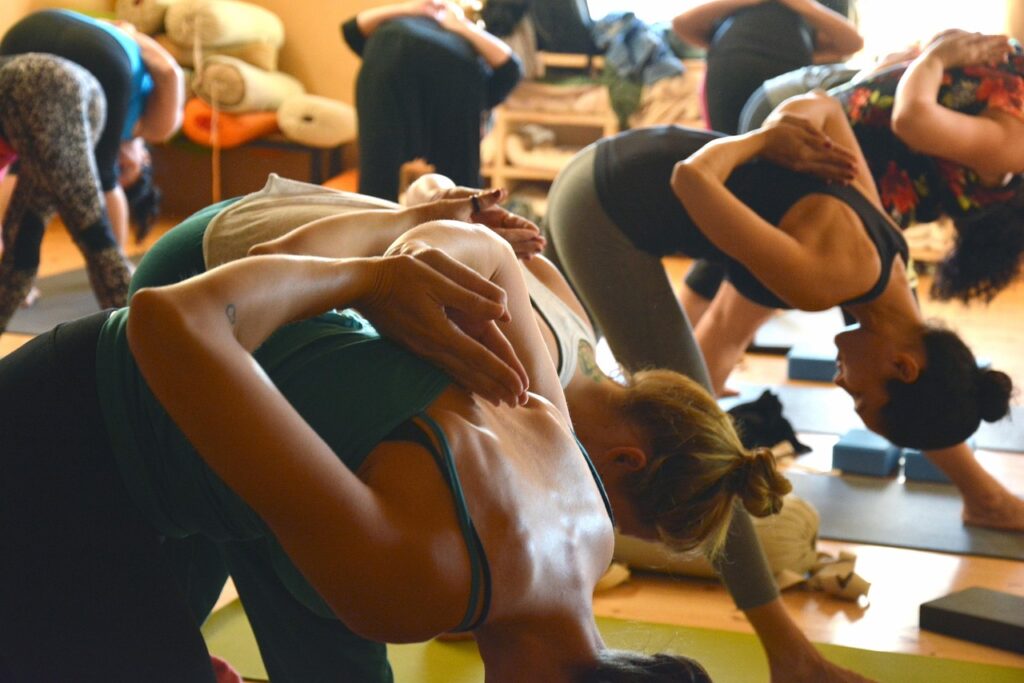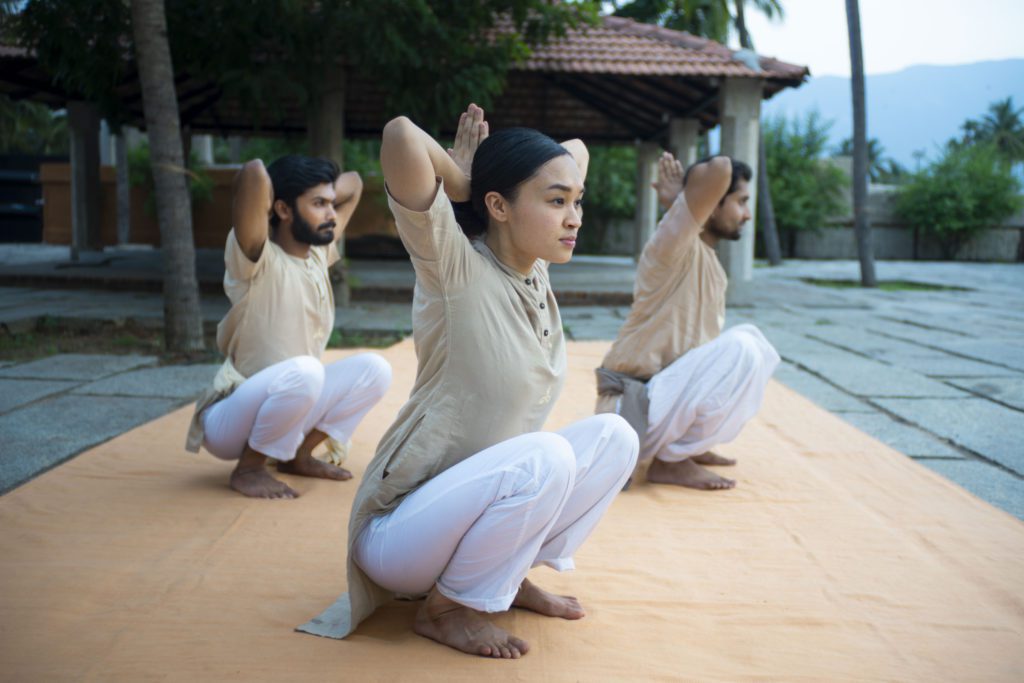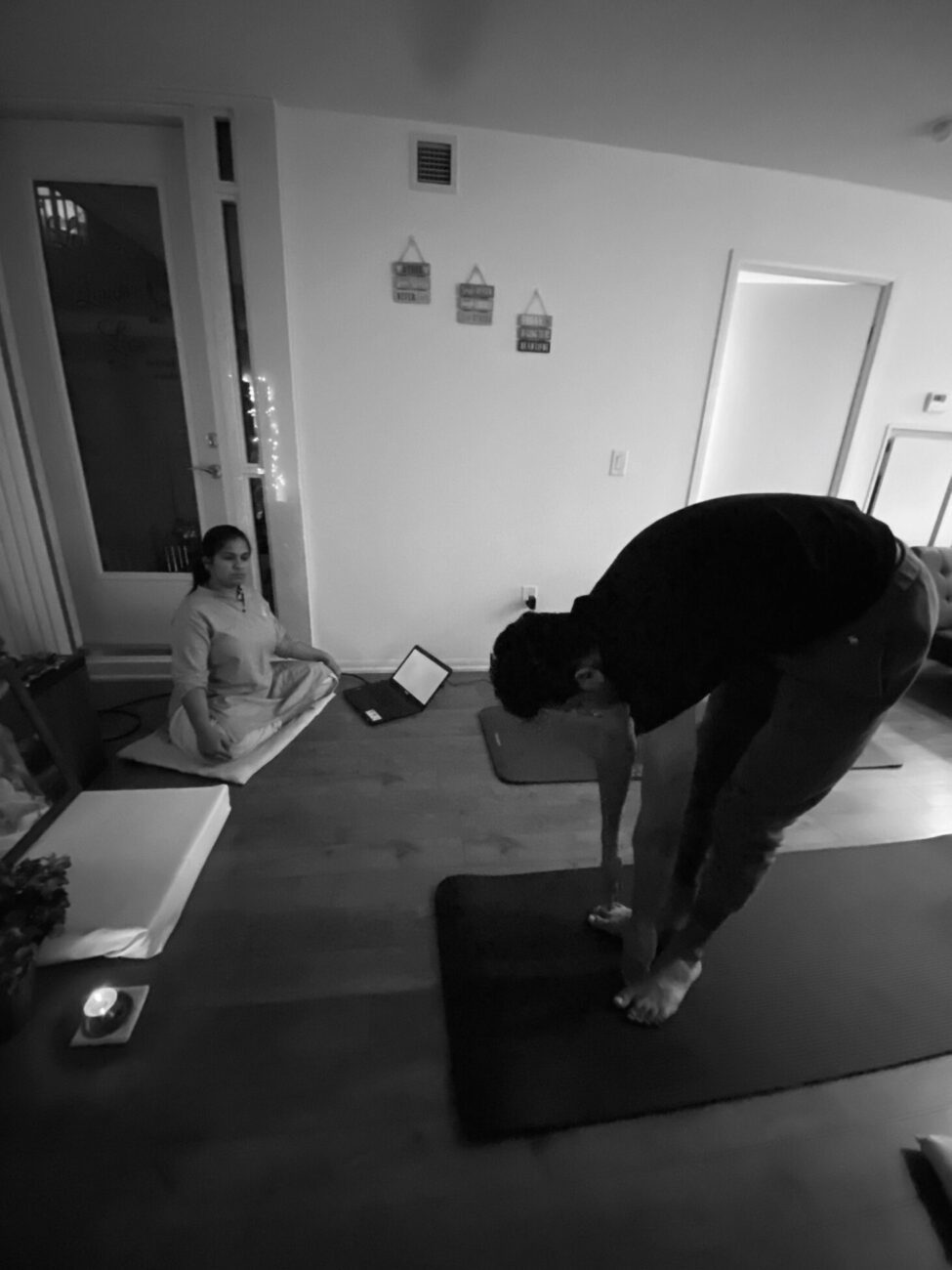If you’ve been exploring yoga lately, chances are you’ve come across hot yoga. It’s everywhere—from glossy Instagram reels of sweat-drenched mats to studios advertising “detox through heat.” The promise is appealing: sweat more, stretch deeper, and walk out feeling like you’ve accomplished something powerful. But what if the heat we really need isn’t external? At Ojassv Hatha Yoga, rooted in the classical yogic tradition as taught by Sadhguru, we don’t use artificial heat. And that’s not just a stylistic choice—it’s a conscious, foundational decision aligned with how yoga was originally designed. Let’s explore why.
What Exactly Is Hot Yoga?
Hot yoga refers to any yoga practice performed in artificially heated rooms—typically ranging from 95 to 105°F (35–40°C). One of the most well-known forms is Bikram Yoga, but many modern studios now offer their own “heated” sequences. The idea is that higher external temperatures help muscles loosen up more quickly, encourage sweating (often mistaken for detox), and intensify the feeling of “working out.” But while this might sound effective on the surface, there’s more to consider—especially from a classical yogic and physiological perspective.

The Problem with Artificial Heat
In classical Hatha Yoga, the body is seen not as something to push or force into flexibility, but as a sensitive, intelligent system—one that’s best supported by building its capacity from the inside out. When you rely on external heat, you’re bypassing your body’s natural thermoregulation and feedback mechanisms. Here’s what that can lead to: Overstretched ligaments and joints: Artificial heat may dull your body’s natural signals, making it easier to go beyond your safe range of motion. False sense of accomplishment: The post-class exhaustion may not be deep relaxation—it could be dehydration, fatigue, or nervous system strain. Disrupted internal balance: Instead of staying present with the breath or posture, your body is constantly trying to cool itself, which pulls energy away from the core purpose of the practice.
In Classical Yoga, Heat Comes From Within In the yogic tradition, there’s a Sanskrit word—Agni—that refers to our internal fire. This isn’t just metaphorical. Agni encompasses your digestive fire, your cellular metabolism, your energy system. Classical Hatha Yoga is designed to build this internal heat naturally, through a carefully crafted system of: Breathwork (like Ujjayi or Nadi Shuddhi) Postures that activate specific energy pathways Discipline and consistency (Tapas) Awareness—not adrenaline This kind of heat doesn’t just make you sweat. It transforms your energy, increases mental clarity, supports digestion, and builds stability—both physically and energetically. “If you generate the heat inside, your body becomes a powerful instrument. If you heat it from outside, you will cook it.” — Sadhguru
The Detox Myth One of the biggest selling points of hot yoga is that it helps you “sweat out toxins.” But scientifically, sweat is not your body’s primary detox system. Real detoxification happens through your liver, kidneys, lymphatic system, and breath. Sweat mostly contains water and electrolytes, not heavy toxins. In classical Hatha Yoga, detox isn’t dramatic—but it’s profound. Twists, inversions, pranayama, and internal cleansing practices like Shatkriyas support your organs and enhance your body’s natural ability to cleanse and restore balance.
Why We Don’t Practice Hot Yoga at Ojassv This is not a criticism of hot yoga or those who teach it. Every path offers something to someone. But at Ojassv, our approach is rooted in the science of inner transformation, not surface-level intensity. We don’t heat the room—we help you kindle your own fire. That fire, built through breath, stillness, and precise movement, lasts longer and burns steadier. Rather than relying on the environment to create heat, we empower the body to generate what it truly needs—at its own pace and in tune with its intelligence. 💡 Classical Hatha Yoga: A Practice Beyond Trends If you’re new to this approach, here’s what to expect: It works with your body, not against it. Progress may feel slower—but it’s real and long-lasting. It builds not just flexibility, but stability, clarity, and resilience. It’s not a workout—it’s a preparation. For the day, for life, and ultimately, for stillness.

Inner Fire vs. Outer Heat: A Choice Worth Considering In the end, it’s not just about yoga styles—it’s about what kind of transformation you’re seeking. External heat might give you immediate sweat. Internal fire builds lifelong strength. One is quick and sensory. The other is subtle, but deeply powerful. If you’re drawn to a practice that respects your body’s rhythms, strengthens your system naturally, and connects you with something more profound than flexibility—Classical Hatha Yoga may be the path you’re looking for.
Ready to experience what yoga feels like when it aligns with your natural intelligence? Join us at Ojassv Hatha Yoga and discover the quiet, steady power of inner fire.





Nice post! 1754789563